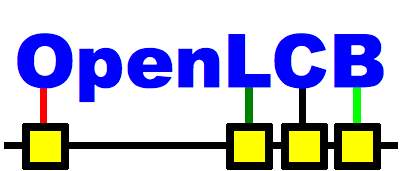OpenLCB: Controlling Your Model Railroad
It's been a while since anything remotely home-brew/electronic for model railways has appeared on this blog... but this is about to change. It's now time to try a third method of electronic control after previous attempts of controlling via DCC Boosters and then Arduino Microprocessors.
Don E. Goodman-Wilson, who you would've seen commenting on a few of my posts here regarding DCC and Arduino, has gone all-out and started production of some pretty amazing technology. He's started a company called railstars which is currently providing DCC boosters, central units and throttles. Not only are these perfectly marketed and designed, they also now incorporate a new concept known as OpenLCB.
OpenLCB

OpenLCB is an initiative by the OpenLCB team to define a network (protocol and required hardware) to control pretty much everything on your model railway. The end result is layout control and automation which is easy to install, configure and extend. As of the 9th of February 2012, there are motions for NMRA to work closely with the OpenLCB project in a venture named NMRAnet... stay tuned for more information on that!
It should be noted that the OpenLCB team is still in the early stages of design work and, although prototypes have been built and tested, there is a lot of work to do to get final products to market.
The basic concept consists of a control bus with nodes located along a network bus, terminated at each end. Each node has it's own processor that can create and respond to events. Events can be anything from controlling accessories and trains on your layout to sending informational messages to remote displays. With this, you can have a node controlling points around your layout, a node controlling trains indirectly via DCC and a final node acting as a control panel with buttons and switches configured to send specific events.
In case you were wondering, the OpenLCB venture has no intention to interact with DCC. Other parties, such as Don with his railstars products, are currently bringing DCC in as an option, but do not intend to outright replace it! Don's efforts with railstars OpenLCB components will allow DCC commands to be transmitted over the OpenLCB protocol allowing each node on the network to respond appropriately. A lot of opportunities will open up with this as you will then be able to use the OpenLCB network to transmit DCC information, allowing completely separate DCC blocks on your layout.
You can find a lot more information about OpenLCB here at their 'First Look' page.
I want to control my DC Layout?
There are currently no nodes designed for use as standard DC throttles; fortunately, controlling DC layouts via the OpenLCB bus should be completely feasible! As per my previous articles on Arduino control of model railways, a simple PWM motor controller is all that is required to supply a model railway with the appropriate power levels. Since OpenLCB is also very compatible with Arduino, it would also therefore be quite practical to transform an Arduino+Motor Controller into an OpenLCB 'node'. This would mean that any 'controller node' could then send 'events' to the 'pwm node' which would then act accordingly... be that 'supply 50% throttle'.
I'd spoken to Don on this concept and he indicated that the OpenLCB key concept was to control 'Trains' rather than 'Blocks'. This is the same as DCC... as you supply the same power+data to all rails on your layout and the locomotives respond only when called. The issue then with DC control is that trains, sitting in blocks, will respond as soon as you apply power. One answer would be to have detection circuits around the layout which would follow movement and assume where each train was. Another would be to have the 'pwm nodes' act simply as 'accessories' that supply power to each block. This concept is still under discussion.
What's Next...
I really do want to get into development and testing of the OpenLCB system. Fortunately the whole lot is open source and one can even use standard Arduinos as 'nodes' based on the code available in the OpenLCB repository. Once I have enough components I'll be building and connecting a few nodes to test the communications functionality. After that I'll go ahead and design a block-controller and pwm node. At the least this will allow me to prototype some ideas whilst controlling my latest n-scale-in-a-table layout.
The OpenLCB project will also shortly be offering a 'dev kit' to parties interested in developing for the OpenLCB project. It will have enough components to create a local network able to control a layout. You can find out more information on the Japanese Modelling & Japan Rail Enthusiasts Forum.
I intend on keeping everyone updated as I tackle the concept of DC in the newly formed OpenLCB realm.



 Melbourne BG SCS Train Timetable
Melbourne BG SCS Train Timetable 


